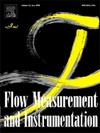基于GPR-POA和LSTM技术的矩形c型钢琴键边堰流量系数创新建模
IF 2.3
3区 工程技术
Q2 ENGINEERING, MECHANICAL
引用次数: 0
摘要
矩形钢琴键边堰(RPKSW)通常使用并安装在通道的外拱处,这是一个方便的边堰位置。此外,堰内流量系数(Cd)的计算对堰的合理设计具有重要意义。因此,在本研究中,首先,c型RPKSW在30°和120°两个圆角上进行了239次实验。首先,利用高斯过程回归(GPR)和长短期记忆(LSTM)两种数据挖掘模型进行建模;然后,利用鹈鹕优化算法(Pelican Optimization Algorithm, POA)建立数据挖掘模型,增强基本模型的流量系数预测能力。通过对这些模型的评价,发现对探地雷达进行的优化(POA)是有效的,并且降低了堰流量系数的预测误差。α、pd/B、L/Rc、P/h1、L/ B和F1是影响堰流量系数的有效参数。由于数据归一化,所有数据的取值范围设置在0到1之间。在本研究中,最佳模型为GPR-POA模型,RMSE = 0.0486, R2 = 0.9388, KGE = 0.9533。GPR和LSTM模型排在GPR- poa模型之后。通过对建模中不同组合的结果进行评估,可以确定P/h1和pd/B比率在提供正确结果方面具有更大的作用。与L/b、Fr、L/R三个参数不同,α、pd/ b、P/h1三个参数对模型的精度影响较大,如果没有这三个参数,模型的精度会显著下降。本文章由计算机程序翻译,如有差异,请以英文原文为准。
Innovative modeling of discharge coefficients for rectangular C-type piano key side weirs using GPR-POA and LSTM techniques
The rectangular piano key side weirs (RPKSW) usually use and install in the outer arch of the channels, which is a convenient location for side weirs. As well, the calculation of the discharge coefficient (Cd) in the weirs is of particular importance in their proper design. Accordingly, in the present study, first, the number of 239 experiments were performed on C-Type RPKSW at two arc angles of 30 and 120°. First, two data-mining models of Gaussian Process Regression (GPR) and Long Short-Term Memory (LSTM) were utilized for modelling. Then, the data-mining models were developed using the Pelican Optimization Algorithm (POA) to enhance the discharge coefficient predictions of basic models. By evaluating these models, it was found that the optimization (POA) performed on GPR was effective and caused a reduction in the prediction error of the weir discharge coefficient. The parameters of α, pd/B, L/Rc, P/h1, L/b, and F1 were identified as effective parameters on the weir discharge coefficient. Due to data normalization, the range of all data was set between 0 and 1. In this study, the best model was the GPR-POA model with RMSE = 0.0486, R2 = 0.9388, and KGE = 0.9533. The GPR and LSTM models were ranked after the GPR-POA model. By evaluating the results of different combinations in modeling, it was determined that P/h1 and pd/B ratios had a greater effect in providing correct results. Unlike three parameters of L/b, Fr, and L/R, three parameters of α, pd/B, and P/h1 had a great impact on the accuracy of the model, so without these parameters, the model accuracy decreased significantly.
求助全文
通过发布文献求助,成功后即可免费获取论文全文。
去求助
来源期刊

Flow Measurement and Instrumentation
工程技术-工程:机械
CiteScore
4.30
自引率
13.60%
发文量
123
审稿时长
6 months
期刊介绍:
Flow Measurement and Instrumentation is dedicated to disseminating the latest research results on all aspects of flow measurement, in both closed conduits and open channels. The design of flow measurement systems involves a wide variety of multidisciplinary activities including modelling the flow sensor, the fluid flow and the sensor/fluid interactions through the use of computation techniques; the development of advanced transducer systems and their associated signal processing and the laboratory and field assessment of the overall system under ideal and disturbed conditions.
FMI is the essential forum for critical information exchange, and contributions are particularly encouraged in the following areas of interest:
Modelling: the application of mathematical and computational modelling to the interaction of fluid dynamics with flowmeters, including flowmeter behaviour, improved flowmeter design and installation problems. Application of CAD/CAE techniques to flowmeter modelling are eligible.
Design and development: the detailed design of the flowmeter head and/or signal processing aspects of novel flowmeters. Emphasis is given to papers identifying new sensor configurations, multisensor flow measurement systems, non-intrusive flow metering techniques and the application of microelectronic techniques in smart or intelligent systems.
Calibration techniques: including descriptions of new or existing calibration facilities and techniques, calibration data from different flowmeter types, and calibration intercomparison data from different laboratories.
Installation effect data: dealing with the effects of non-ideal flow conditions on flowmeters. Papers combining a theoretical understanding of flowmeter behaviour with experimental work are particularly welcome.
 求助内容:
求助内容: 应助结果提醒方式:
应助结果提醒方式:


